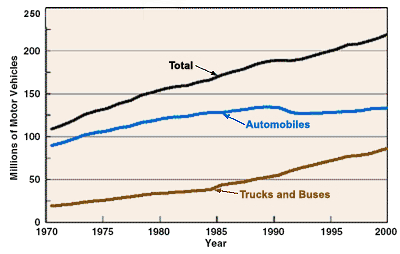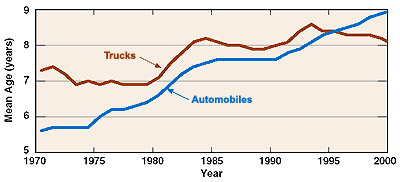Sunday, March 13th, 2005
I think I know now why they call the restaurant “Millennium:” that’s how long it takes to follow their recipes.
On Saturday I made a page from the Artful Vegan cookbook. The actual 47-word title for the dish isn’t handy; something like “Black Quinoa Cakes with Calypso Bean Confit, Squash Curry, Braised Collard Greens, and Mango-Habanero Sauce”. It’s a single entree with five separate sub-recipes (nearly all of which call for onions).
Save yourself the time of shopping for black quinoa. You could buy regular yellow quinoa and color each individual grain with a black Sharpie in less time than you’ll spend not finding a source for black quinoa, which as far as I can tell has to be mail-ordered from Peru.
The recipe contains a few other buried challenges, like smoking onions. I own no smoker. I had to settle for grilling the onions, and adding a half-teaspoon of liquid smoke extract to the pot when nobody was looking.
I realized that having five separate procedures to follow is about one unit of recipe complexity more than I can comfortable handle. Three things at a time, I can manage, but with four or five I need to start considering serving separate courses. I think the quinoa cake would have been nice a la carte, maybe with a side of organic ketchup, for example.
 Anyway, the result, when it finally hit the table, was impressive: a layer of black beans with smoked onions, topped with braised collard greens sauteed with more onions, topped with a yellow quinoa cake (which contains onions), topped with Indian squash curry that’s mostly onions, topped with habanero-mango sauce and toasted pistachios and cilantro.
Anyway, the result, when it finally hit the table, was impressive: a layer of black beans with smoked onions, topped with braised collard greens sauteed with more onions, topped with a yellow quinoa cake (which contains onions), topped with Indian squash curry that’s mostly onions, topped with habanero-mango sauce and toasted pistachios and cilantro.
The recipe claims to serve six. You have to remember that this is “California cuisine,” which I usually translate for out-of-state visitors as “Big plate, small food.” Four of us polished the full recipe and half a loaf of spelt sourdough besides.
Tags:
posted to channel: Food & Cooking
updated: 2005-03-14 07:51:50
Saturday, March 12th, 2005
Thursday, March 10th, 2005
Leave it to the Bush Administration to come up with an environmental-protection bill so noxious that even Republicans rejected it.
On Wednesday, the Bush Administration’s so-called “Clear Skies” bill was defeated by a tie vote in the Senate Environment and Public Works Committee.
“This is a stunning victory for public health,” said Sujatha Jahagirdar, Clean Air Advocate for Environment California. “It’s great news for the American people, and bad news for the polluting energy companies who were looking forward to this sweetheart deal.” “We commend Senator Boxer for working to defeat this disastrous bill.”
The Sierra Club points out the disastrous results that would have followed, had Bush’s “Clear Skies” bill passed:
- Enforcement of existing toxic air pollution protections in the Clean Air Act will limit mercury pollution to 5 tons per year by 2008. The Bush Administration’s “Clear Skies” plan would have weakened the limit to 26 tons per year by 2010 — allowing 520 percent more mercury pollution.
- Current Clean Air Act programs could result in NOx pollution levels of about 1.25 million tons by 2010. But the Bush plan calls for loosening the cap on NOx pollution to 2.1 million tons by 2008 — effectively allowing 68 percent more NOx pollution.
- Clean Air Act programs could reduce SO2 pollution levels to 2 million tons by 2012. The Bush Administration plan weakens protections to allow 4.5 million tons of SO2 by 2010 — allowing a staggering 225 percent more SO2 pollution.
More good news for the environment came on Thursday, when the EPA adopted CAIR, the Clean Air Interstate Rule, which Environmental Defense projects will “[make] the biggest cuts to smog- and soot-forming powerplant pollution in a decade.” CAIR is “Clear Skies” without the ironic quote marks: it really will result in clearer skies.
I didn’t expect to be writing much good news about the environment during George W. Bush’s presidency. This week’s eco-victories restore a bit of my faith in the political process.
(See my previous rant about “Clear Skies” and CAIR.)
Tags:
posted to channel: Conservation
updated: 2005-03-11 16:15:25
Wednesday, March 9th, 2005
 The Union of Concerned Scientists’ latest campaign points out a stunningly offensive advertising claim from the auto industry: “Autos made today are virtually emission-free.”
The Union of Concerned Scientists’ latest campaign points out a stunningly offensive advertising claim from the auto industry: “Autos made today are virtually emission-free.”
As with most environmental-impact statements made by big industries (and, in fact, the Bush Administration), there’s a nugget of truth used to disguise the ugly reality. The truth is that in lab testing, the average car today runs cleaner than the average car of 30 years ago. But the ugly reality is that we’re still in much worse shape than ever before.
According to a 1996 study, EPA lab tests show a 96% reduction in vehicle emissions since the mid-1960s. However:
[C]ars in actual use emitted only 75 percent less CO and HC, while Americans drove twice as many miles per year — resulting in a roughly 50-percent net drop in actual auto emissions. Vehicle travel is growing so rapidly that the trend of decreasing total emissions could reverse without additional regulatory steps.
The Auto Alliance’s claim is a smart marketing ploy. Telling consumers their vehicles are “virtually emission-free” seems to remove the auto industry from any discussion about environmental toxins. But in fact the auto industry should be at the center of any discussion about environmental toxins. According to a consortium of environmental groups, “Burning gasoline in cars and trucks is responsible for 27 percent of global warming pollution in the U.S.”
How do you get from being “virtually emission-free” to being responsible for 27% of global warming pollution? That’s not a question the Auto Alliance is likely to answer. In my opinion, the Auto Alliance is guilty of greenscamming. They’d like new car buyers to feel good about emission levels, when in fact auto emissions are still a major source of toxic pollution. The Auto Alliance’s ad ignores these factors:
 There are more cars on the road than ever before.
There are more cars on the road than ever before. People keep cars longer than ever before.
People keep cars longer than ever before. People drive more miles per year than ever before.
People drive more miles per year than ever before.
So, in summary, new cars run cleaner than old cars, but there are more old cars on the road, and more total cars on the road, and everybody drives further than they used to.
Add to that the fact that overall fleet fuel economy is in decline. It’s counter-intuitive — reduced emissions implies better fuel economy, you might think — but the fuel efficiency of our national vehicle fleet peaked in 1988 and is now lower than it was 10 years ago.
 Add to that the fact that although there are more models of SULEV and PZEV vehicles available, 24% of all vehicles sold in the US are SUVs. Although there are SULEV SUVs coming on the market, how many years will it be before they’ve penetrated the market sufficiently to have an impact on either overall fleet fuel efficiency or emissions?
Add to that the fact that although there are more models of SULEV and PZEV vehicles available, 24% of all vehicles sold in the US are SUVs. Although there are SULEV SUVs coming on the market, how many years will it be before they’ve penetrated the market sufficiently to have an impact on either overall fleet fuel efficiency or emissions?
The bottom line is that the Auto Alliance has picked out one partial truth and used it in a way that misleads consumers, to their own ill health.
The UCS provides a convenient mechanism for responding: Petition the FCC to investigate the Auto Alliance claim and issue appropriate sanctions.
The UCS provides a convenient summary of the problem, including scary statistics on C02 emissions from automobiles, on the main campaign page: Automakers Pollute the Press
Tags:
posted to channel: Automotive
updated: 2005-03-15 06:06:18
Tuesday, March 8th, 2005
I’ll be attending O’Reilly’s Emerging Technology Conference in San Diego next week. Ping me if you’re going, so I know to look at my feet when I pass you in the hallway.
The menu preferences section of the registration form made me laugh. It’s not as granola as some of the menus I’ve seen before, but it’s a lot more functional. The choices are:
- Vegetarian/Vegan
- Kosher
- Life Threatening Food Allergy
- Other: ___________
I checked the first box, because I couldn’t fit the 320 words that describe my current dietary restrictions onto the “other” line. We’ll see what happens. If the food’s any good, maybe I’ll be mealblogging the entire conference.
Tags:
posted to channel: Personal
updated: 2005-03-09 15:07:07

